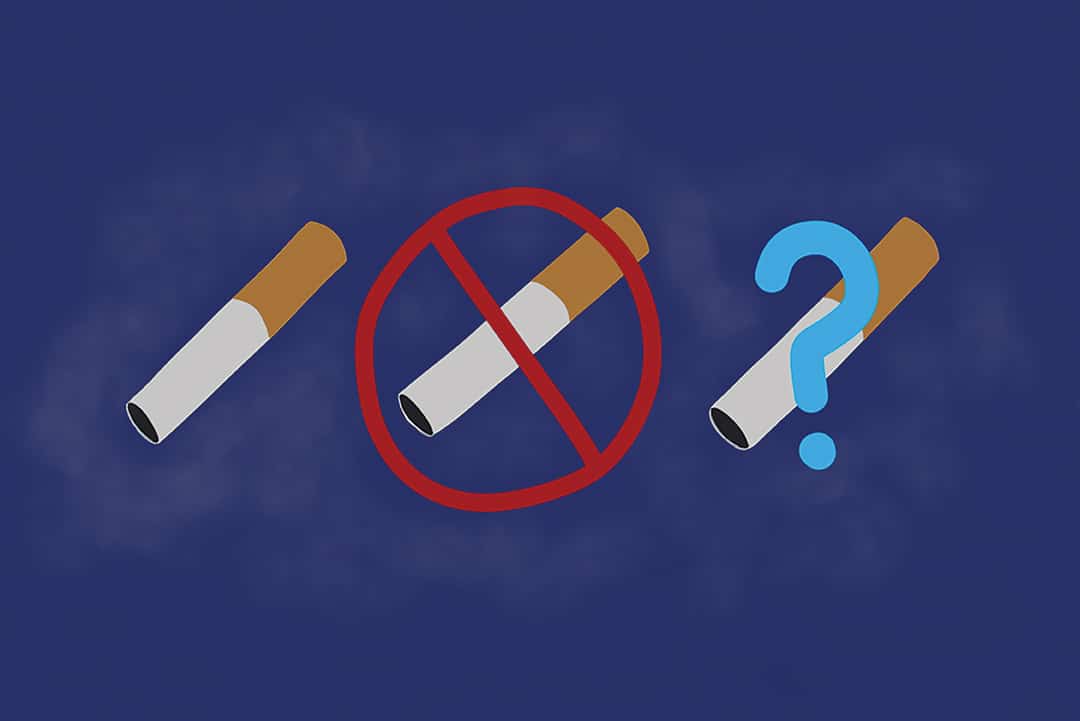It has been over nine months since U of T’s smoking ban was implemented. Announced in November, and implemented this past January, the ban was introduced with the intention of creating a healthier campus, away from the harmful effects of first and secondhand smoke. While the rule is meant to protect people’s health, it is ineffective as it currently stands.
Designated smoking areas
It would be a good idea to incorporate smoking areas on campus because they encourage people to smoke in a more secluded space, where non-smokers are less likely to inhale harmful smoke.
Unlike the university’s Scarborough and Mississauga campuses, UTSG does not have designated smoking areas. It is likely that administrators believe there is no need for such spaces due to the campus’ proximity to public streets, where people can legally smoke.
According to the campus policy, smokers must walk from their classes to off-campus areas to consume tobacco or marijuana. Most often, they congregate on the sidewalks of notoriously busy public streets such as St. George, Hoskin, and Harbord. These sidewalks are city property and do not fall under the university’s jurisdiction.
This affects all members of the UTSG community, both smokers and non-smokers. Smokers who have classes in locations such as King’s College Circle waste a lot of time getting to an off-campus sidewalk for a smoke break. This could affect their ability to get to class on time if they are scheduled back-to-back.
Students who live in residence may put their safety at risk by going to a public space alone for a smoke at night. Worst of all, because the ban gives smokers no choice but to light up on the street, passersby now routinely inhale more secondhand smoke on their walks between classes.
A solution that would accommodate everyone would be to designate smoking areas on campus, which would encourage smokers to get their fix in a safe and secluded area.
Cigarette disposal receptacles
UTSG used to have ashtrays, but ever since the smoking ban, there has been nowhere for faculty and students to responsibly dispose of their butts. Recently, I noticed that outdoor garbage cans around campus have begun sporting a sticker that suggest that cigarette butts are not permitted in the trash.
These garbage cans are the only ones anywhere near campus. If cigarettes cannot be disposed of in the garbage, smokers who consume tobacco on the public streets beside campus are more inclined to throw them on the ground. The lack of places to discard cigarettes at the moment will lead to an eventual build-up of litter on public sidewalks, mere metres away from university buildings.
The university’s Mississauga campus is a prime example of positive change in terms of cigarette littering. Currently, the campus is working with a company called TerraCycle to “recycle waste from outdoor cigarette butt collectors on campus.” The project depends on smokers disposing of their butts in receptacles placed around campus.
TerraCycle receptacles would be useful at the downtown campus, as there needs to be a sustainable way for smokers to dispose of their butts.
This was U of T’s first year banning smoking, so it’s understandable that some of the details surrounding the ban have not been worked out yet. A compromise involving the installation of designated smoking areas and cigarette butt receptacles would benefit everyone. Hopefully, the university will reflect on the way things have unfolded since the ban, and move to accommodate all faculty and students.
Agata Mociani is a second-year English student at New College.


